Unlocking Organic Growth in 2024 – Your Essential Guide to SEO Strategy
Did you know that over 90% of online experiences begin with a search engine? In today’s digital landscape, where competition is fierce and attention spans are short, having a strong SEO strategy isn’t just an option, it’s a necessity for businesses of all sizes.
But SEO isn’t a static set of rules. It’s a dynamic, evolving ecosystem where best practices and algorithms constantly shift. What worked last year might not work today, and what works today might be obsolete tomorrow. That’s why having a well-defined SEO strategy isn’t just about achieving initial visibility, it’s about continuously adapting and optimizing to stay ahead of the curve and secure long-term success.
So, what exactly is an SEO strategy? Essentially, it’s a comprehensive plan designed to improve your website’s visibility in search engine results pages (SERPs) and attract qualified, organic traffic from your target audience. It encompasses everything from crafting valuable content and optimizing technical aspects to building backlinks and staying informed about industry trends.
Here’s the key takeaway: an effective SEO strategy doesn’t promise overnight results. It’s a commitment to continuous learning, ongoing optimization, and strategic adaptation. But the rewards are undeniable: increased organic traffic, improved brand awareness, higher conversion rates, and ultimately, sustainable growth.
Ready to embark on your SEO journey? This guide will equip you with the essential knowledge and actionable steps to craft a winning strategy tailored to your business needs and unlock the full potential of organic search in 2024. Let’s dive in!
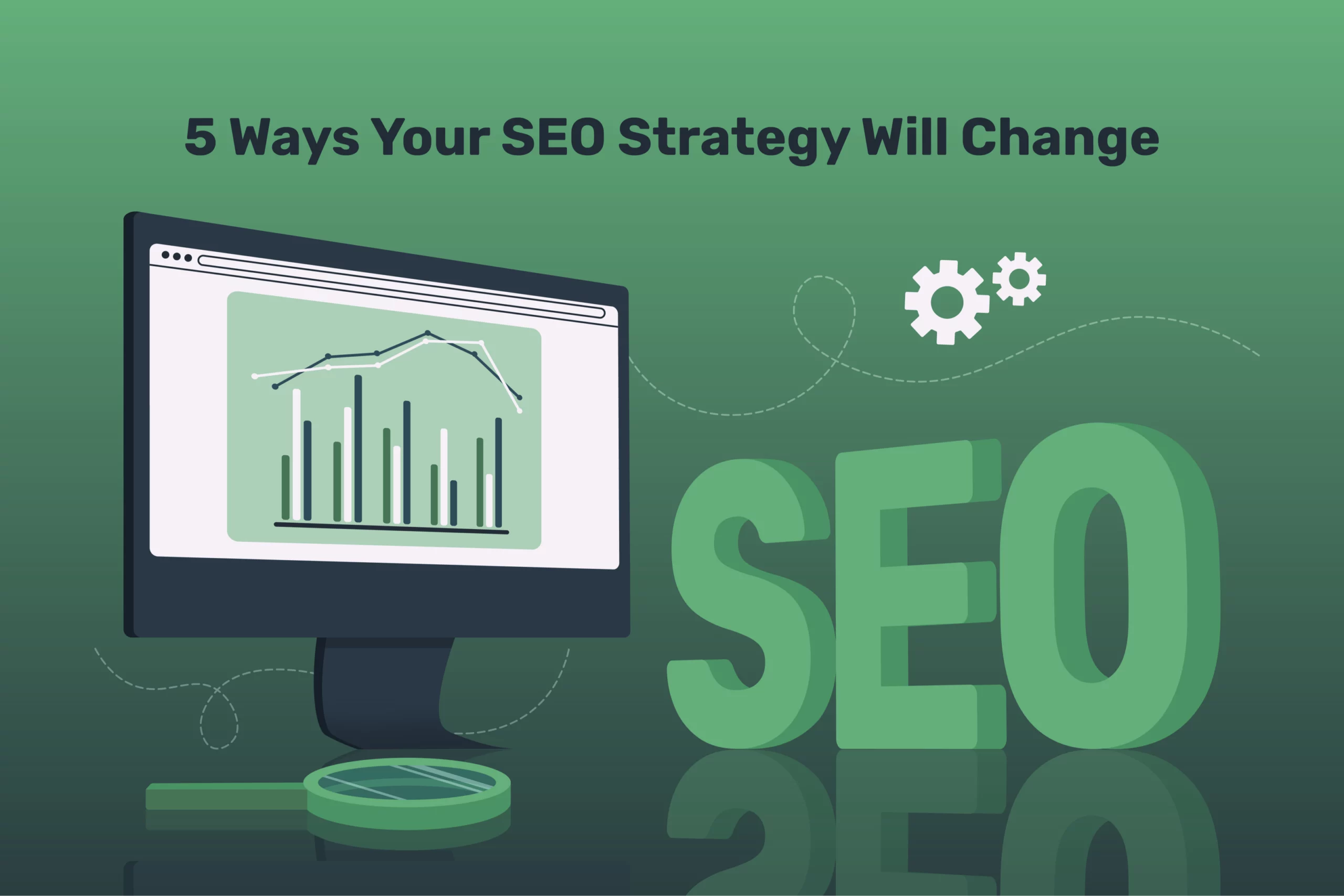
Table of Contents
1. User-centric SEO and Search Intent
Search intent was the story of 2020. Indeed, every year Google gets a little bit better at determining what users are hoping to achieve when they carry out a search. 2021 will be no different.
But what does this mean in terms of concrete actions?
If you’re already taking search intent seriously, you’ll likely see increased dividends. If not, you’re more likely to start falling behind. Specifically, it’s important to add a crucial additional stage to your research and planning process.
This is called SERP analysis.
Essentially, this is a process of looking at the results page for a given search term, in order to determine what the algorithm thinks users are looking for. This can include factors like:
- Information and insights,
- Content format,
- Length,
- Video, infographics etc,
- Tone.
SERP analysis is all about examining the content which already ranks for a given search term, and drawing insights into the kind of content you should create.
Let’s take an example. Running shoes is a keyword which almost exclusively returns product pages:

This tells us that Google has determined that users have a transactional search intent. That is, they want to buy something. If you wanted to rank for this term, you’d have to make a product page which outperforms your competitors.
Crucially, you would never rank for this term with any other form of content, such as ‘X Reasons you Need Running Shoes’ or ‘How to Choose a Pair of Running Shoes’. These articles would be aimed at informational search intents.
2. Entities and Brand Optimisation for SEO
Year after year, search algorithms have also become less concerned with individual keywords, and more concerned with topics. This is because technology has gotten better at recognising the relationships between different keywords through a process called natural language processing.
Google uses an information set known as the Knowledge Graph to build these associations. This can be thought of as being like a massive spider web, with different entities acting as nodes which are linked by things they have in common.
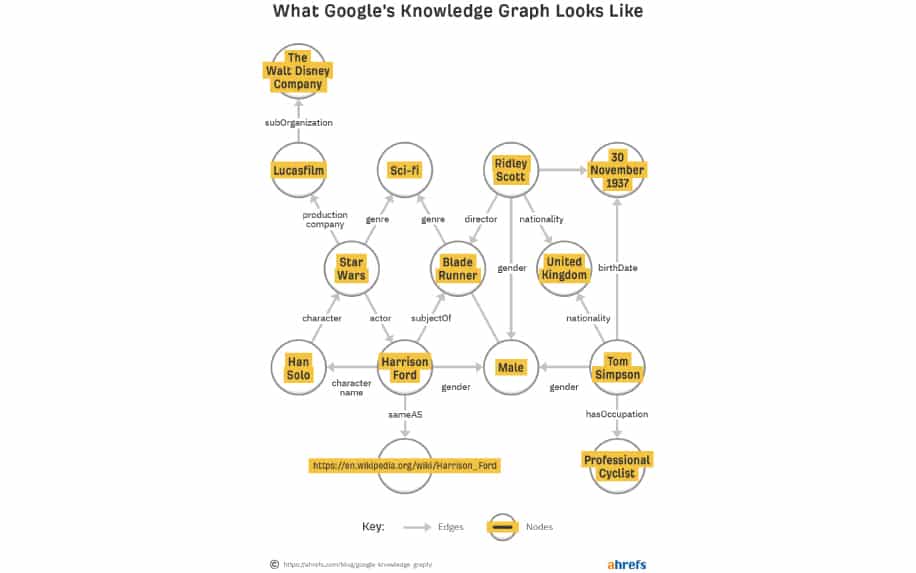
The important thing here is that your brand is a node, and so are your services, your industry, and any other search queries relating to what you offer. Your goal should be to build links between your brand and these other nodes in the knowledge graph.
The key to this is optimising all of your online presences to reflect your desired keywords and topics. As a minimum, you should have fully optimised and up to date profiles on:
- LinkedIn,
- Facebook,
- Twitter,
- YouTube,
- Google My Business,
- Industry directories,
- Knowledge bases like WikiData.
Additionally, it’s important to use consistent data and messaging across all of these platforms in order to build strong associations in Knowledge Graph.
3. Mobile UX for SEO
User experience and SEO are highly intertwined. Mobile UX has been growing in importance for a number of years, but this will explode in 2021. There are two reasons for this:
- Google is ceasing to rate your desktop and mobile UX metrics separately,
- As businesses begin to reopen following the COVID crisis, mobile search’s role in local SEO will begin to be felt even more greatly in many locales.
As ever, it’s important to talk about this trend in terms of concrete steps you can take in your 2021 SEO strategy.
In fact, there are two steps you should take.
The first is nailing your technical SEO and UX metrics, including page speed, responsiveness and navigation. The best way to measure these is using Google’s proprietary Page Speed Insights tool.
This offers key data on how your site functions across mobile and desktop:
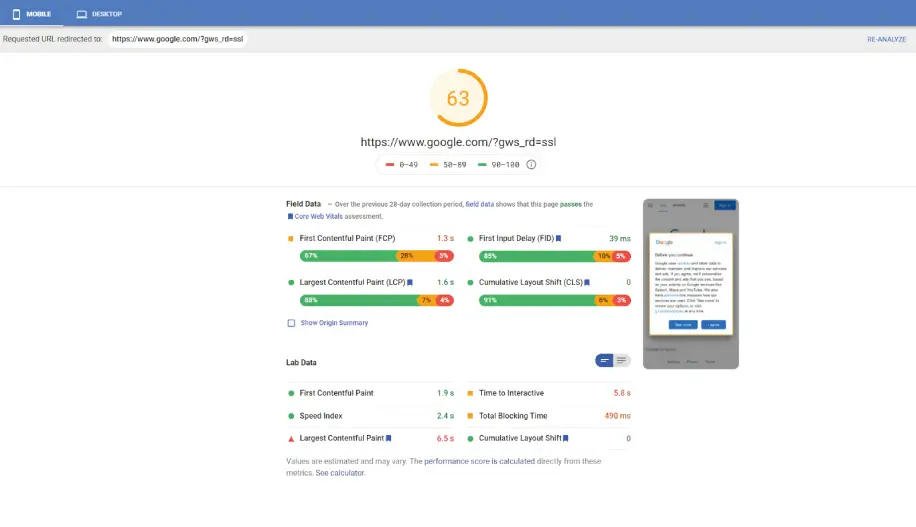
It’s vital to aim for the highest possible metrics on both platforms.
The second big change relates to how Google views your mobile and desktop sites. Specifically, Google has begun to privilege sites which offer a great cross-device experience on all pages.
This means that sites with dedicated mobile pages will begin to suffer. Instead, you should try to offer the best possible cross-device experience using responsive web design.
4. Voice Search and Semantic SEO
Voice search has been one of the standout trends of the last few years, but in 2021 it will truly come of age. In fact, today over half of households in the US and other western countries have a smart speaker:
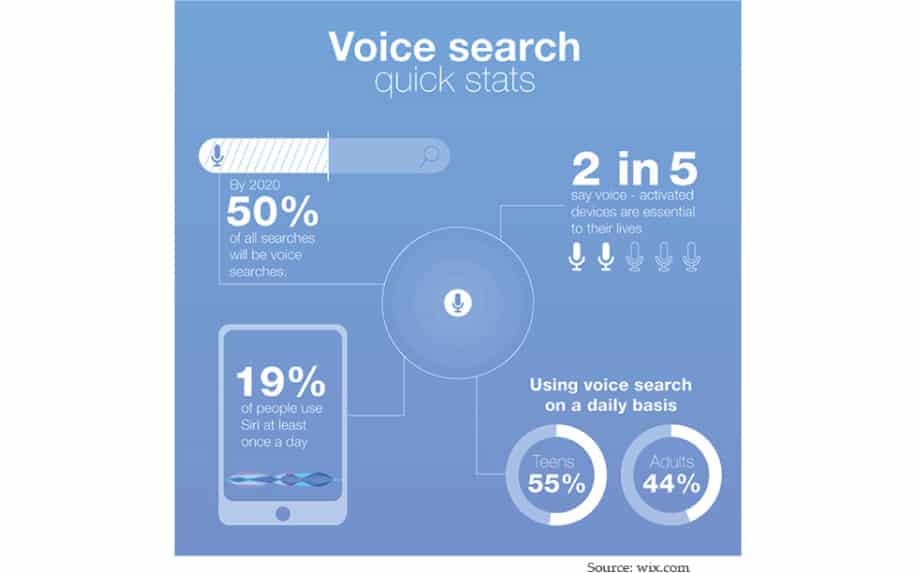
In previous years, it might have been forgivable to be skeptical of voice search. However, these days tells a different story, especially among younger audiences.
The only challenge is knowing how to take advantage of this new trend.
As with any other element of your SEO strategy in 2021, the key here is understanding how users actually interact with smart devices. This differs greatly from text-based search. This is sometimes referred to as semantic SEO, putting an even greater focus on topics.
Additionally, voice users are even more likely to use questions. As such, you need to signpost for the algorithm that your content addresses specific questions. An easy and effective way to do this is to include titles and subheadings which begin with:
- Who,
- What,
- Where,
- When,
- Why,
- How.
You can also use rich text elements, like bullet points and numbered lists to make your content more friendly for voice search.
5. Video and SEO Strategy
Finally, video continues to play an ever-increasing role in SEO. In fact, video offers two clear benefits for your organic traffic.
- Directing traffic to your site through the featured video snipper at the top of SERPs.
- Using on-page video indicates a strong UX to Google, which will boost the rankability of the page.
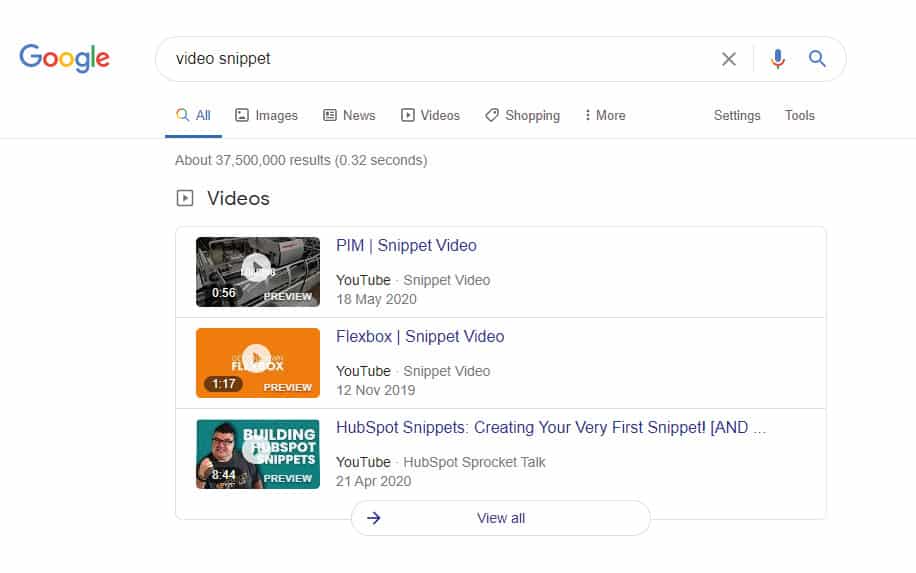
You don’t have to be Steven Spielberg or invest thousands in production to take advantage of video for SEO in 2021. Even simple explainer videos can pay massive dividends. ProfileTree have seen excellent results with nothing but screen-captured presentations with recorded voice overs.
Video offers another huge benefit. Users love it.
One of the most important rules of UX is that users are incredibly lazy. On-page makes your content considerably easier to consume. In short, users don’t have to put the effort into reading it.
This can improve important domain-level SEO signals, like time on page and exit rates, helping your overall site’s rankability.
Key Elements of an Effective SEO Strategy in 2024:
1. Technical SEO: Building a Strong Foundation:
- Website Speed: Ensure lightning-fast loading times for both desktop and mobile users. Utilize tools like Google PageSpeed Insights and GTmetrix to identify and fix speed issues.
- Mobile-friendliness: Make your website responsive and user-friendly across all devices, as mobile searches continue to dominate. Google’s mobile-first indexing prioritizes mobile versions for ranking.
- Structured Data: Implement schema markup to provide search engines with rich information about your content, improving visibility and understanding.
- Technical Crawlability: Ensure search engines can easily crawl and index your website. Check for broken links, robots.txt directives, and XML sitemaps.
- Core Web Vitals: Focus on metrics like Largest Contentful Paint (LCP), First Input Delay (FID), and Cumulative Layout Shift (CLS) for a smooth user experience, which directly impacts SEO rankings.
2. On-page Optimization: Sending the Right Signals:
- Keyword Research: Conduct thorough keyword research to identify relevant keywords with search volume and match user intent. Tools like Google Keyword Planner and Ahrefs can help.
- Title Tags & Meta Descriptions: Craft compelling and informative title tags and meta descriptions that include relevant keywords, accurately represent your content, and entice clicks.
- Header Tags: Use clear and concise H1, H2, and H3 tags to structure your content, improve readability, and highlight key information for search engines.
- Internal Linking: Create a strong internal linking structure to help search engines understand your website’s hierarchy and distribute link juice effectively.
- High-Quality Content: Create valuable, informative, and engaging content that answers user queries, showcases expertise, and adheres to Google’s E-A-T (Expertise, Authoritativeness, and Trustworthiness) principles.
3. Off-page Optimization: Building Authority and Trust:
- Link Building: Earn high-quality backlinks from relevant and authoritative websites. Focus on natural link building through guest blogging, creating shareable content, and industry engagement.
- Brand Mentions: Generate positive brand mentions and online reviews from customers and influencers. Encourage social media engagement and community building.
- Online Reputation Management: Proactively address negative reviews and mentions, ensuring your online presence reflects a positive and trustworthy image.
4. Content Marketing: Attracting and Engaging Users:
- Content Strategy: Develop a content strategy aligned with your SEO goals and target audience. Create diverse content formats like blog posts, infographics, videos, and case studies.
- Search Intent Optimization: Understand what users are looking for with specific search queries and tailor your content to answer their questions and solve their problems.
- Content Freshness: Maintain a consistent content creation schedule and regularly update existing content to ensure relevance and freshness.
- Content Promotion: Promote your content on social media, through email marketing, and influencer outreach to drive traffic and engagement.
5. Local SEO: Reaching Local Customers (if applicable):
- Claim and Optimize Local Listings: Claim and optimize your business profiles on Google My Business, Yelp, and other relevant directories with accurate information and engaging content.
- Local Keywords: Integrate local keywords like city and neighborhood names into your website content and title tags.
- Local Reviews: Encourage customers to leave positive reviews on local directories and your website.
- NAP Consistency: Ensure consistent business name, address, and phone number (NAP) across all online listings.
6. Voice Search Optimization: Adapting to Changing User Behavior:
- Conversational Language: Use natural language and long-tail keywords that reflect how people speak when searching by voice.
- Focus on Questions: Structure your content around answering questions users might ask through voice assistants.
- Fast Loading Speeds: Prioritize mobile-friendliness and website speed for optimal voice search performance.
7. Evolving SEO Trends: Staying Ahead of the Curve:
- AI-powered Content Creation: Explore tools and platforms leveraging AI to assist with content creation and optimization.
- Visual Search: Optimize images with relevant alt text and descriptions to rank for visual searches.
- Core Web Vitals: Stay updated on Google’s core web vitals and prioritize these metrics for improved user experience and SEO performance.
By understanding and implementing these key elements, you can build a strong foundation for your SEO strategy in 2024 and attract organic traffic that converts. Remember, SEO is an ongoing process, so be ready to adapt, experiment, and learn as the landscape evolves.
Building and Maintaining a Successful SEO Strategy in 2024:
Setting Clear Goals and Objectives:
- Define SMART Goals: Establish Specific, Measurable, Achievable, Relevant, and Time-bound objectives for your SEO efforts. Consider goals like:
- Increasing organic traffic by 20% within 6 months.
- Ranking in the top 3 positions for a specific keyword within a year.
- Improving website conversion rate by 15% within a quarter.
- Align Goals with Business Objectives: Ensure your SEO goals directly contribute to your overall business goals, like increasing sales, generating leads, or improving brand awareness.
Conducting Keyword Research:
- Identify Target Audience: Understand your ideal audience’s needs, pain points, and search behavior.
- Utilize Keyword Research Tools: Leverage tools like Google Keyword Planner, Ahrefs, or SEMrush to discover relevant keywords with high search volume and low competition.
- Focus on Both Head and Long-Tail Keywords: Target a mix of high-volume head keywords (e.g., “best laptops”) and lower-volume, specific long-tail keywords (e.g., “best laptops for students with long battery life”).
- Analyze Competitor Keywords: Research the keywords your competitors rank for and consider incorporating relevant ones into your strategy.
Creating a Consistent Content Calendar:
- Develop a Content Strategy: Define the type of content you’ll create (blog posts, articles, videos, infographics, etc.) and how it aligns with your target audience and keywords.
- Maintain a Regular Publishing Schedule: Aim for consistent content creation, even if it’s just once or twice a week, to keep your website fresh and attract new visitors.
- Optimize Content for Search Engines: Include relevant keywords naturally throughout your content, but prioritize creating valuable and informative pieces.
- Prioritize User Experience: Ensure your content is well-formatted, easy to read, and visually appealing.
Leveraging SEO Tools and Analytics:
- Track Your Progress: Utilize tools like Google Search Console, Ahrefs, or SEMrush to track website traffic, keyword rankings, backlink profile, and other important SEO metrics.
- Identify Areas for Improvement: Analyze data to understand where your SEO efforts are performing well and where they need improvement.
- Measure Performance: Regularly review and analyze your SEO data to track your progress towards your goals and identify opportunities for optimization.
- Stay Updated on Industry Trends: Use tools and resources to stay informed about the latest SEO best practices, algorithm changes, and emerging trends.
Staying Ahead of the Curve:
- Continuously Learn: Allocate time for learning and attending industry events, webinars, or courses to keep your SEO knowledge up-to-date.
- Adapt to Algorithm Changes: Be prepared to adjust your strategy based on Google’s algorithm updates and evolving search engine trends.
- Experiment and Test: Don’t be afraid to experiment with different SEO tactics and track their effectiveness. A/B testing can help you identify what works best for your website and audience.
Building an SEO Team or Outsourcing:
- Evaluate Your Needs: Consider the size and complexity of your website, your budget, and your internal expertise before deciding to build an in-house team or outsource to SEO professionals.
- Build an In-house Team: If you have the resources, hiring an SEO specialist or building a dedicated team can offer long-term benefits and greater control.
- Outsource to SEO Professionals: Agencies or freelancers can provide specialized expertise and handle various SEO tasks, but careful vetting and clear communication are crucial.
Remember, building and maintaining a successful SEO strategy requires dedication, continuous effort, and adaptability. By setting clear goals, conducting thorough research, creating high-quality content, and utilizing effective tools and analytics, you can attract organic traffic, improve your website’s ranking, and achieve your business objectives.
FAQ: Navigating the Evolving SEO Landscape in 2024
1. How can I adapt my existing website to optimize it for SEO?
Conduct a technical SEO audit to identify areas for improvement. Focus on website speed, mobile-friendliness, and structured data implementation. Create high-quality content targeting relevant keywords and optimize existing content for search engines. Build backlinks from relevant websites and manage your online reputation actively.
2. What are the essential tools for monitoring and analyzing my SEO performance?
Google Search Console provides website traffic and performance insights. Tools like SEMrush, Ahrefs, and Moz offer comprehensive SEO analysis, keyword research, and competitor tracking.
3. How much time and effort does it take to see results from SEO?
SEO is a long-term strategy, and results can vary depending on competition and implementation. Consistent effort and continuous optimization are key. Aim for gradual improvements over time while tracking progress through analytics.
4. Should I hire an SEO professional or agency?
If you have limited resources or expertise, outsourcing to professionals can be beneficial. Carefully research and choose the right partner based on your needs and budget. In-house teams offer greater control but require dedicated resources.
5. Where can I find more resources and support for my SEO journey?
Industry publications, blogs, online communities, and conferences offer valuable insights and learning opportunities. Utilize this guide as a starting point and continue exploring resources to stay updated on best practices and trends.
Conclusion: Embrace the Power of Organic Growth
The ever-evolving SEO landscape can seem daunting, but with the right knowledge and a commitment to continuous learning, you can unlock the immense potential of organic search. By implementing the strategies outlined in this guide, staying informed about industry trends, and adapting your approach based on data and insights, you can attract qualified traffic, build brand awareness, and achieve sustainable growth in the ever-changing digital landscape.
Remember, SEO is a journey, not a destination. Embrace the learning process, experiment strategically, and watch your website climb the search engine ladder, one step at a time.


